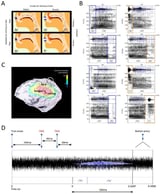New Hope for Alzheimer's: rTMS and Cognitive Training Show Significant Cognitive and Quality of Life Improvements
September 2, 2024
Repetitive transcranial magnetic stimulation (rTMS) is a non-invasive technique that shows promise in improving cognitive function in patients with Alzheimer's Disease (AD), particularly when combined with cognitive training (CT).
Current pharmacological treatments for AD are limited and often poorly tolerated, underscoring the need for alternative therapies like CT and rTMS.
A systematic review identified nine studies involving 290 participants, with a focus on the combined effects of rTMS and CT, including language training, in patients with early-stage AD.
CT programs typically emphasize memory enhancement but often overlook language training, which is essential for comprehensive cognitive rehabilitation.
Results from the review indicated significant improvements in global cognitive function, neurocognitive and neuropsychiatric symptoms, and quality of life for the active treatment group receiving combined rTMS and CT.
In a separate study involving 100 patients with poststroke urinary incontinence, rTMS treatment led to significant improvements in bladder function metrics.
This research was conducted by Jialu Chen and colleagues at the Second Affiliated Hospital of Chongqing Medical University, highlighting the potential of rTMS in addressing urinary issues post-stroke.
Heart rate variability (HRV) was assessed before and after interventions, revealing insights into autonomic function in stroke survivors.
The findings emphasize the potential of transcranial direct current stimulation (tDCS) as a therapeutic intervention for improving autonomic function and functional capacity in stroke survivors.
The study suggests that stimulating the left hemisphere could be safer for modulating autonomic balance, potentially reducing future cardiovascular risks.
A significant increase in walking distance during a six-minute walk test was observed for participants after receiving tDCS, indicating improved functional capacity.
These findings raise questions about the limits of focal stimulation and its implications for understanding motor and perceptual neural circuits.
Summary based on 4 sources

